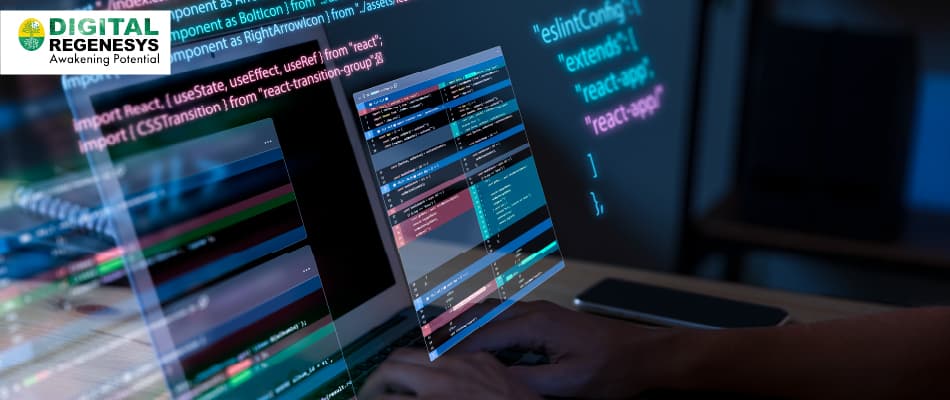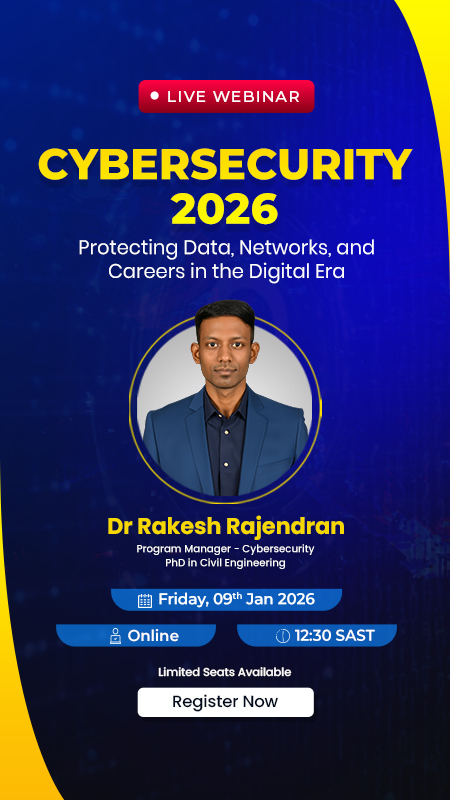What Is a Full-Stack Development Course?
In today’s rapidly evolving tech landscape, full-stack development has emerged as a coveted skill set. It drives innovation and powers the digital transformation of businesses worldwide. A full-stack development course equips individuals with the comprehensive knowledge and practical skills needed to excel in this dynamic field.
In this article, let us explore what a full-stack development course entails and how it can prepare you for a rewarding tech career.
What is a Full-Stack Development Course?
A full-stack development course is an educational programme designed to teach individuals the skills and knowledge required to become proficient in front-end and back-end web development. The term “full-stack” refers to the entire stack of technologies used to develop a web application, including the client-side (front-end) and server-side (back-end) components.
A full-stack development course provides a comprehensive understanding of the entire web development process, from designing user interfaces to managing server-side logic and databases. It equips individuals with the skills needed to build modern, scalable, and interactive web applications, making them versatile professionals in the tech industry.
Why Study a Full-Stack Development Course?
Studying a full-stack development course offers numerous benefits and opportunities in the dynamic field of web development.
Here are some compelling reasons to consider studying full-stack development:
Versatility:
Full-stack developers have expertise in both front-end and back-end technologies, making them versatile professionals who can work on all aspects of web development. This versatility allows them to handle diverse projects, collaborate with different teams, and adapt to changing technology trends.
Comprehensive Skill Set:
By studying full-stack development, you gain not only a comprehensive skill set covering HTML, CSS, JavaScript, front-end frameworks, back-end programming languages, databases, version control, deployment, and more but also a sense of empowerment. This broad knowledge enables you to build complete web applications from scratch and troubleshoot issues effectively, instilling confidence in your abilities.
Career Opportunities:
Full-stack developers are in high demand across industries, including technology companies, startups, e-commerce platforms, healthcare organisations, finance, education, and more. With a strong foundation in full-stack development, you can pursue various roles such as full-stack developer, web developer, software engineer, UI/UX developer, and technical lead.
Problem-Solving Abilities:
Full-stack development courses emphasise problem-solving skills, critical thinking, and logical reasoning. You learn how to analyse complex requirements, design efficient solutions, debug code, optimise performance, and improve user experience, enhancing problem-solving capabilities.
Entrepreneurship:
Full-stack developers have the knowledge and skills to create web applications, prototypes, or minimum viable products (MVPs). This entrepreneurial spirit allows them to launch startups, build innovative products, and contribute to the startup ecosystem.
Continuous Learning:
Web development is a thrilling, rapidly evolving field with new technologies, frameworks, and tools emerging regularly. Studying full-stack development keeps you engaged in this exciting journey of continuous learning, staying updated with industry trends, experimenting with new technologies, and enhancing your expertise over time.
Collaboration and Communication:
Full-stack developers thrive in a vibrant, multidisciplinary community, collaborating with designers, back-end developers, project managers, and stakeholders. Studying full-stack development not only equips you with communication skills, teamwork abilities, and an understanding of project workflows but also makes you feel part of this dynamic network, facilitating effective collaboration in diverse environments.
Remote Work Opportunities:
Full-stack development skills are highly sought after in remote and freelance work environments. Many companies and startups hire remote full-stack developers for project-based work, offering flexibility, autonomy, and global opportunities.
Thus, studying full-stack development opens doors to a rewarding and dynamic career path, equipping you with the knowledge, skills, and mindset needed to thrive in the ever-evolving tech industry.
What are the Job Prospects for Full-Stack Developers?
The job prospects for full-stack developers are very promising. Here are the key points:
High Demand:
The demand for full-stack developers proliferates, driven by the increasing need for businesses to have an online presence and the accelerating digitisation across industries. The employment of web developers, including full-stack developers, is projected to grow much faster than the average for all occupations.
Versatile Roles:
Full-stack developers can take on a variety of roles, including full-stack developer, front-end developer, back-end developer, web developer, web designer, and software developer. This versatility makes them highly employable.
Top MNC Hiring:
Leading multinational companies (MNCs) such as Google, Amazon, Microsoft, and others are actively hiring full-stack developers, recognising their ability to handle the entire web development process.
Competitive Salaries:
Full-stack developers command competitive salaries. The average annual salary for an entry-level full-stack developer in South Africa is R307,253.
*Source: PayScale
Freelance Opportunities:
Full-stack developers can also find lucrative freelance opportunities on platforms like Fiverr and Upwork, catering to the needs of small and medium-sized businesses.
Global Prospects:
The demand for full-stack developers is more comprehensive than in any country; the role is highly demanded globally, especially in tech hubs like the United States.
Therefore, the job prospects for full-stack developers are excellent. There is a growing demand, diverse career opportunities, competitive salaries, and the ability to work in various industries and settings, including MNCs, startups, and freelancers.
Programming Languages Used in Full-Stack Development
The most popular programming languages used in full-stack development are:
JavaScript:
JavaScript is the most widely used language for full-stack development, as it can be used for both front-end and back-end development (with Node.js). It is essential for building dynamic and interactive web applications.
Python:
Python is a popular back-end language for full-stack development, known for its readability, versatility, and extensive libraries that simplify complex tasks.
Java:
Java is a reliable and robust language for building enterprise-level back-end applications due to its cross-platform capabilities, strong ecosystem, and performance.
PHP:
PHP is a widely used server-side scripting language. It is particularly well-suited to web development, with a focus on rapid development and integration with HTML.
C#:
C# is a powerful language developed by Microsoft. It is often used in conjunction with the ASP.NET framework to build secure and scalable web applications, especially within the Microsoft ecosystem.
These programming languages, along with their associated frameworks and libraries, provide full-stack developers with the necessary tools to build robust, scalable, and efficient web applications from the ground up.

Conclusion
A full-stack development course is a gateway to a world of opportunities in the ever-expanding realm of technology. By providing an understanding of both front-end and back-end development, along with essential tools and frameworks, this course empowers individuals to embark on a successful journey as full-stack developers.
As businesses prioritise digital innovation, the demand for skilled full-stack developers remains high, making this course a valuable investment in one’s career growth and proficiency in the tech industry.
Enhance your skill set through the best Full Stack Web & Software Development course at Digital Regenesys.
FAQs
What is a full-stack development course?
A full-stack development course is a comprehensive training course covering front-end and back-end web development technologies and techniques. It equips learners with the skills and knowledge needed to build and deploy complete web applications from start to finish.
Who can benefit from taking a full-stack development course?
Anyone interested in pursuing a career in web development can benefit from a full-stack development course. It includes beginners looking to enter the tech industry, professionals seeking to expand their skills, entrepreneurs aiming to build their web applications, and developers transitioning from front-end or back-end roles to full-stack development.
What skills will I gain from completing a full-stack development course?
Completing a full-stack development course will equip you with a wide range of skills, including proficiency in front-end technologies for designing user interfaces, knowledge of back-end technologies for server-side logic and database management, the ability to integrate front-end and back-end components, experience with version control and collaboration tools, problem-solving skills, and project management capabilities.
What topics are typically covered in a full-stack development course?
Full-stack development courses usually cover a range of topics, including Front-End Development, Version Control, Interactive Websites and Accessibility, Advanced JavaScript and Testing, Introduction to React, Collaboration with Git and GitHub, Back-End Development, Databases, Connecting Front-End to Back-End, Web Security, Operating Systems and DevOps and Full-Stack E-Commerce Experience.
Click here for more details about the course curriculum.
What career opportunities are available after completing a full-stack development course?
Graduates of full-stack development courses can pursue various career paths, including full-stack developer, web developer, software engineer, front-end developer, back-end developer, application developer, UI/UX designer, system analyst, technical lead, and freelance developer. The skills acquired are highly sought after in industries such as technology, e-commerce, finance, healthcare, education, and more.













